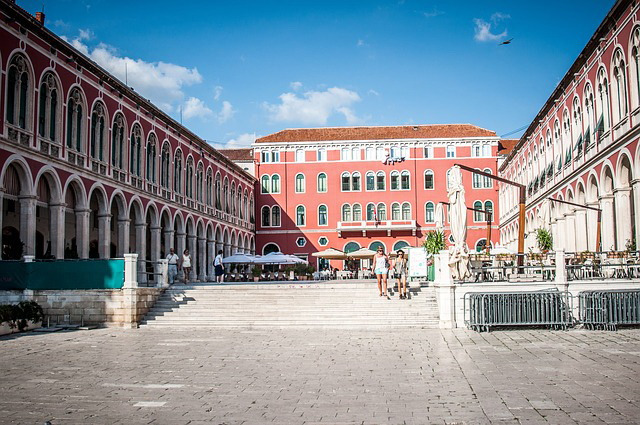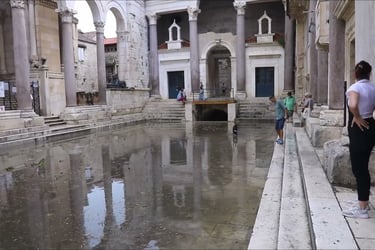Flooding at the Diocletian's Palace
The city of Split, Croatia, is bearing the brunt of climate change
Antoine Kraewinkels and Lucas Browet
7/14/20252 min read


Diocletian's Palace in Split, Croatia, is one of the best-preserved Roman-era settlements along the Adriatic coastline.
© DiocletiansPalace.org - All Rights Reserved
Split, Diocletian's Palace - Croatian National Tourism Board


Copyright 2021 - Croatia Week All Right Reserved
VIDEO: Violent sudden storm in Split wreaks havoc.
Conservation efforts were spoiled by a storm that hit the city of Split on 8 July 2025. Winds of up to 215 km/h (133 mph) were recorded. This meteorological event injured 24 people and caused significant damage to property; boats sank, infrastructure was destroyed and heritage sites were affected by flooding. At Diocletian's Palace, the cellar was flooded with more than 50 cm of water !
Such extreme weather events are not a regular occurrence at this time of year. They are probably the result of climate change. Scientists predict that such catastrophic episodes will become more frequent and intense. Nowadays, due to climate change, storms are more powerful and frequent, and heatwaves are hotter and last longer. Croatia experienced temperatures over 40°C (104°F) for several days at the start of this summer.
The news shows us once again that heritage sites are directly affected by climate change. Locals are sometimes economically dependent on mass tourism to these sites. However, tourism activity can affect the conservation of heritage sites and exacerbate the effects of climate change on them. For instance, increased water consumption linked to the tourism industry in summer can put a strain on the supply chain and exacerbate existing droughts. Infrastructure and buildings allocated to the tourism industry are sometimes illegally constructed in protected natural areas, altering the composition of the soil and making it waterproof. Urbanisation driven by the tourism industry prevents water from infiltrating the soil, and tourism development increases the risk of flooding for heritage sites. Infrastructure built for tourists usually consumes a lot of groundwater and emits chemical pollutants into coastal ecosystems. These habitats are particularly vulnerable to the chlorine used in the numerous pools along the Croatian coastline.
Are these issues being whispered about in the Mediterranean Sea? How do the locals mitigate the effects of climate change on historic sites? Support our project, 'Coastal Memories', to help us answer these questions! It is a documentary film project about heritage threatened by climate change in the Mediterranean.


